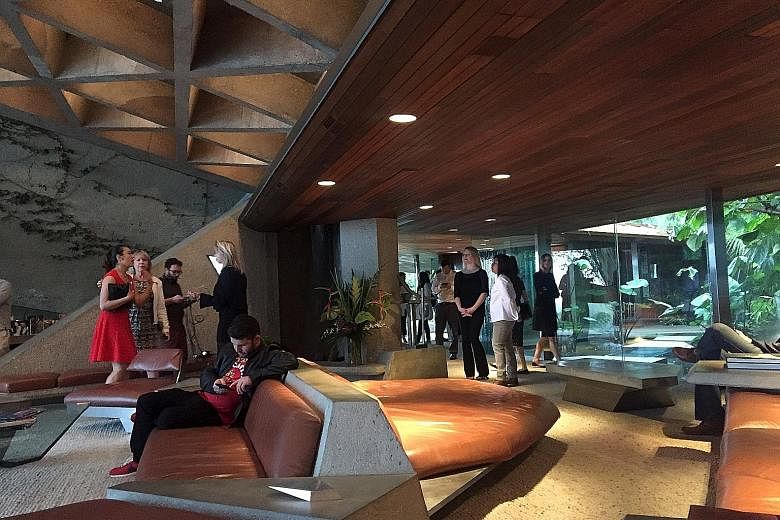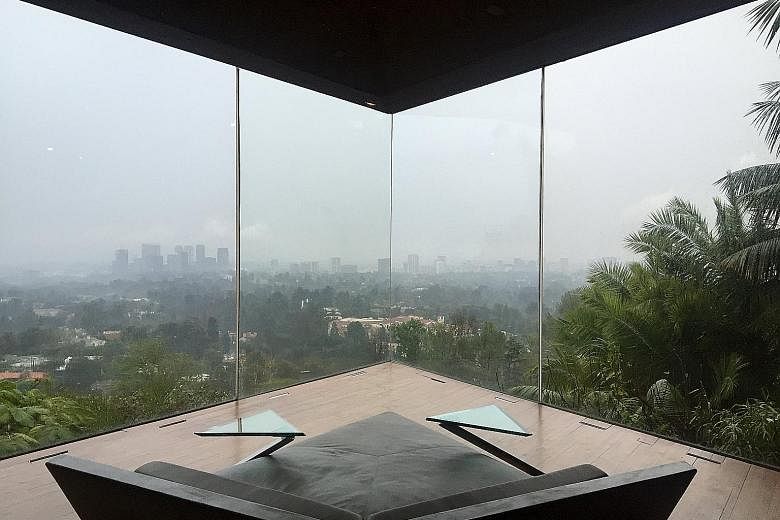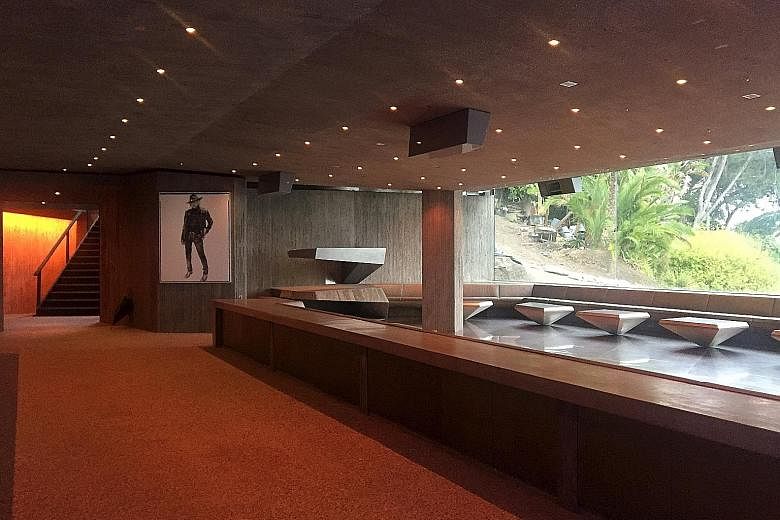LOS ANGELES • The owner of a luxury house featured most notably in the 1998 film, The Big Lebowski, is donating it to the Los Angeles County Museum of Art with the hope that people will build more architecturally creative homes.
Mr James Goldstein, owner of the Sheats Goldstein residence in the Los Angeles hills, has promised to leave the building, along with its gardens, art pieces and his fashion collection, to the museum so that it will one day be open to the public.
"Los Angeles should represent a city that's contemporary and moving into the future," he says. "I want people to build houses in a way that hasn't been done before that are moving into the future instead of the past, so I hope my house is an inspiration for that kind."
The house was featured prominently in The Big Lebowski, the Coen brothers' surreal stoner film, when Jeff Bridges' character, The Dude, finds himself at the home of sleazy pornographer Jackie Treehorn.
The residence, with its sweeping vistas of the Los Angeles skyline and coast, represents a quintessential Hollywood party house with low-slung couches and a well-lit pool snuggled into a corner where the roof, speckled with hundreds of skylights, curves into the ground.
The art collection of Mr Goldstein - he does not give his age, but has been reported to be in his 70s - includes works by American artists Ed Ruscha and Kenny Scharf.
In an adjoining building, the owner has created Club James, most recently the venue for a private post- Grammy Awards party, with a bar and seating carved into the concrete floors.
The property also includes a Skyspace light installation by American artist James Turrell within the tropical gardens.
Mr Goldstein, a self-confessed fan of film-making brothers Ethan and Joel Coen, says he is "very proud of my house being included" in the cult film. The house has also appeared in 2003's Charlie's Angels: Full Throttle and is often used for high-fashion photo shoots.
The owner, dressed in a cowboy hat and a bright blue leather jacket stamped with his initials from his own clothing label, says he has spent decades enhancing the 1960s house built by American architect John Lautner.
He co-designed many elements, from frameless windows to concrete floors, blurring the lines between outdoor and indoor spaces.
"No matter what the taste of people is, whether they like contemporary architecture or not, when they come through this house, their mouths drop open and they all seem to love it," says Mr Goldstein.
REUTERS



